Which Hand Should I Wear My Pearl Bracelet On?

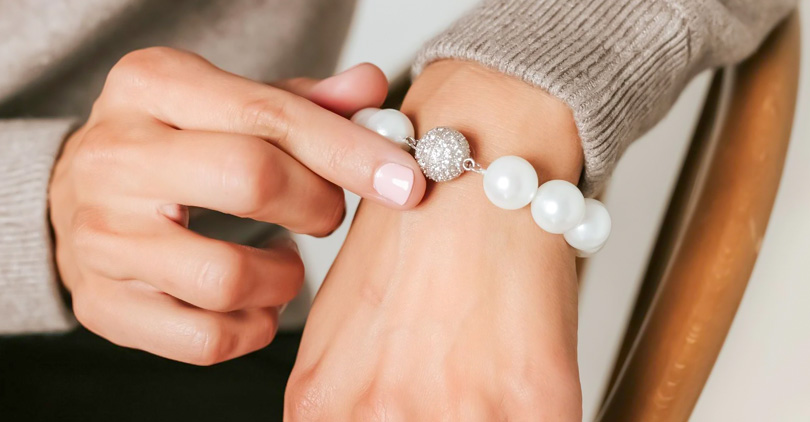
If you want to add elegance to your look, put on a pearl bracelet. Women everywhere wear these pretty bracelets because they go with everything – and they can make any outfit classy, too! But did you ever stop to think about which wrist you should slip it onto?
It's not as simple as left or right, actually. Depending on where you come from or what you believe, there are all sorts of ideas about which hand should host your pearls. Throughout history, after all, these little spheres have been loaded with meaning – representing purity just as much as money.
From ancient Rome and China all the way up to contemporary society, we've adored our cultured pearls for what they symbolize, as much as how beautiful they are. So let's take a trip together into the world of cultural habits concerning pearl bracelets – it might just change which arm you prefer yours on.
The Tradition of Wearing Bracelets
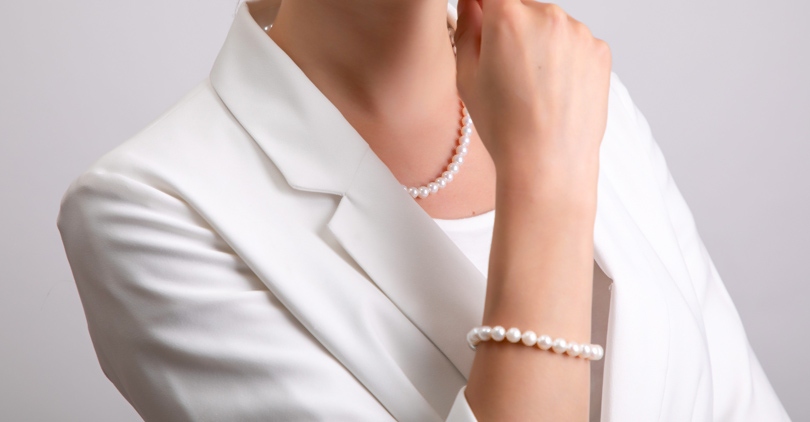
Bracelets have been worn for thousands of years, and different cultures have attached meaning to them. Throughout history, people have considered their personal preferences along with cultural beliefs and practical reasons when deciding which hand to wear bracelets on.
Historical Context

Bracelets in ancient Egypt were a way to show off how rich and important you were. They were often made from gold and had precious stones on them, too. Besides, there were famous Scarab bracelets, which represented rebirth, transformation, and protection.
By wearing bracelets on their left hand, which was seen as the "receptive" hand, people thought they could connect better with good energy coming from their heart or mind. It's like saying, "I want to be open to all the good stuff coming my way!"
In ancient China, people believed that jade bracelets kept you healthy and safe from evil spirits – but only if you wore them on your left wrist!
Cultural Considerations

Bracelet preferences are still impacted by cultural practices. For married women in India, wearing bangles (a type of bracelet) on both wrists is customary and indicates that they are not just wealthy but also married.
Conversely, bracelets or watches for people from Western backgrounds may be seen more frequently on the left wrist. As a result, their right hand—the one most people use for tasks—remains unhindered.
Personal and Practical Considerations
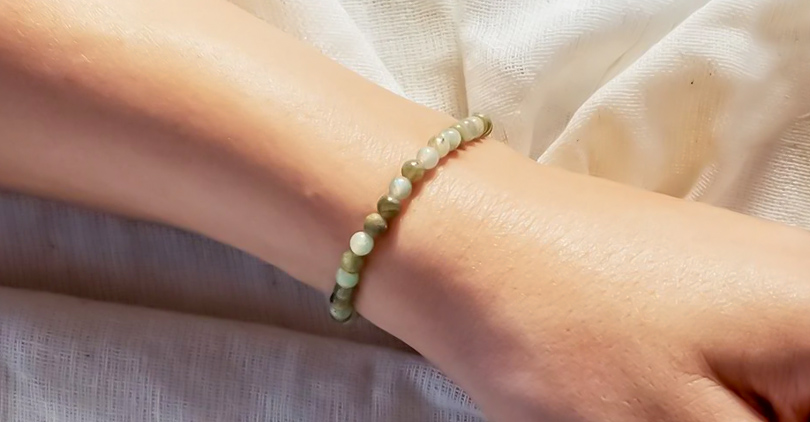
Practical considerations and personal preferences also come into play when choosing which wrist to wear bracelets on.
For instance, left-handed individuals may opt for their right wrist so that the bracelet doesn't interfere with everyday activities. Comfort or how well a bracelet fits in with an overall look are also reasons why some people pick one wrist over another.
Thus, someone who plays tennis might decide to forego a bracelet on their dominant hand so as not to hinder their movement on the court.
Likewise, a right-handed writer may choose her left wrist as the placement for jewelry she regularly dons so that nothing gets in the way of her penmanship.
The choice often comes down to both practicality and personal style - meaning there's no hard-and-fast rule about which side you should wear your bangles on!
Right Hand vs. Left Hand
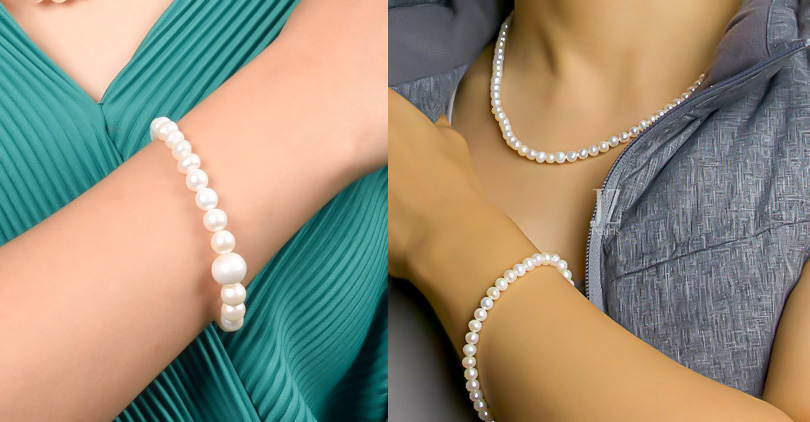
Traditional beliefs in culture determine whether wearing a bracelet on your left wrist or right wrist carries special significance. Throughout history, people have associated the left side with receiving. As such, wearing a bracelet on this hand connects you to emotional and spiritual energies.
In contrast, your right hand is known as the giving hand. A bracelet worn here may symbolize outward energy, strength, and action. Some Western societies embrace this tradition. Men and women might sport bracelets on their right wrists to indicate power and activity.
However, there are no hard and fast rules about which wrist to wear it on. Personal preference and comfort come into play here. For example, a right-handed person might opt to wear his or her bracelet on the left side in order not to interfere with everyday tasks.
Likewise, someone may choose one wrist over the other based on how the bracelet looks with an outfit or feels throughout the day. Wearing a bracelet is a personal choice –– influenced by tradition, practicality, and individual style.
Pearl Bracelets and Their Significance
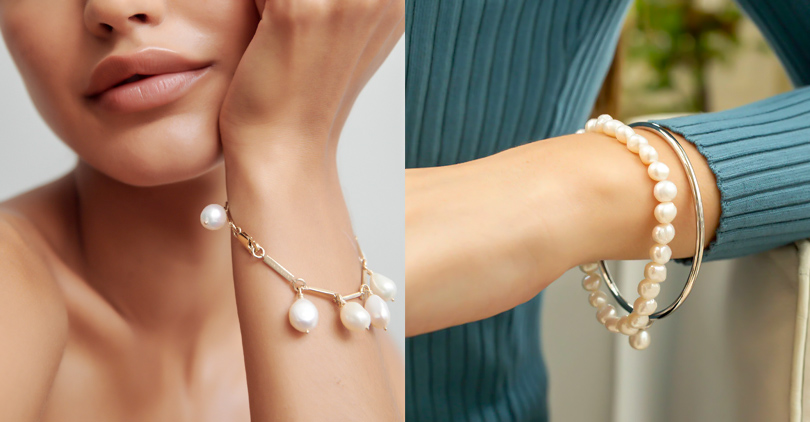
Pearl bracelets are special because they combine lasting beauty with deep meaning. When mollusks like oysters make pearls, there is a sense they represent purity, insight, and calm. This is why wearing pearl bracelets doesn't just add class to an outfit – it also brings something valuable to it.
Symbolism of Pearls
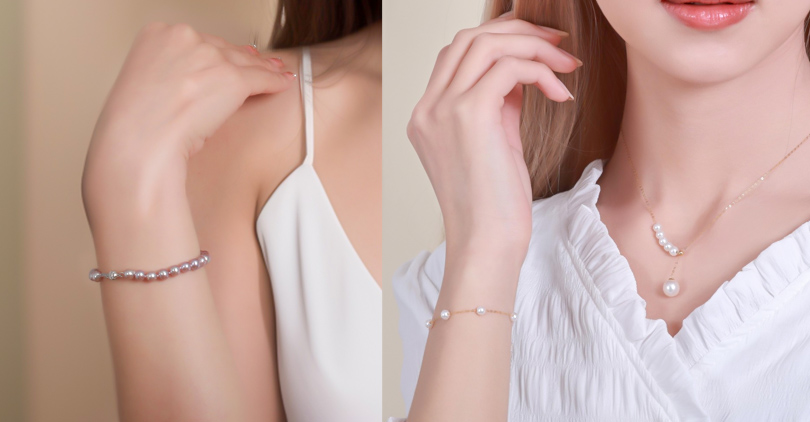
If you're wondering how to wear your pearls, consider their symbolism. Pearls are often given as gifts for major life milestones such as graduations, weddings, or anniversaries because they represent purity and harmony.
For example, a freshwater pearl bracelet may, therefore, represent both a fresh start and deep commitment – giving it more sentimental oomph than meets the eye.
Alternatively, presenting a bride with a white pearl bracelet on her wedding day could be viewed as symbolizing not only purity but also a union characterized by blissfulness.
Choosing the Hand
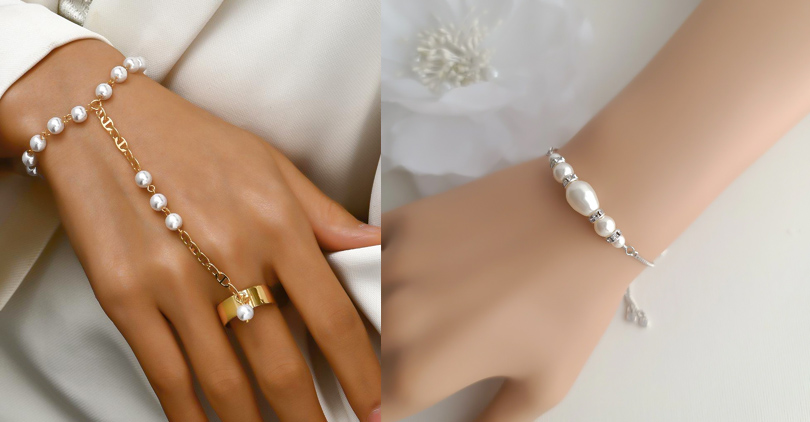
If you wear a pearl bracelet on your left hand associated with the heart, it can mean something extra special, emotionally or spiritually. It might symbolize that you're working on yourself from the inside out and connecting to inner peace (super calming!) or personal growth.
But if you rock one on your right hand—which is all about action and giving—it could mean that you're all about spreading love and wisdom everywhere you go. Plus, we bet you've got plenty of both to spare.
For instance, if someone wishes to remember their own progress and development, they might wear a pearl bracelet on their left wrist. Alternatively, putting it on your right wrist could symbolize imparting wisdom and being pure to the world.
Ultimately, which hand you choose is up to you. Consider what the bracelet means and what you intend to convey by wearing it there.
Practical Considerations
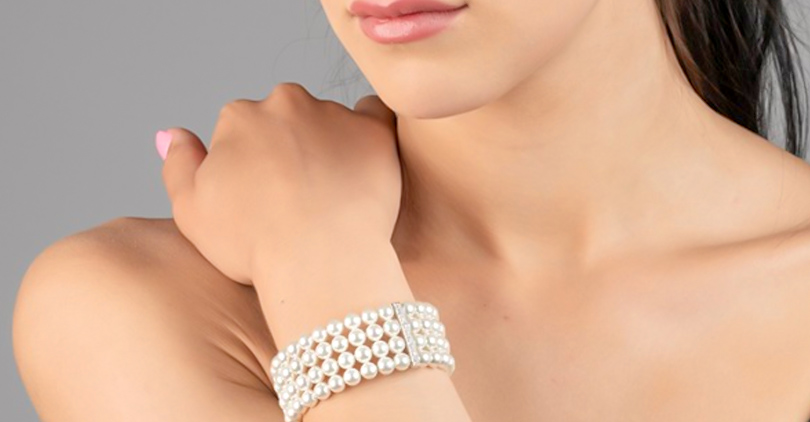
If one is trying to determine which hand is best suited for wearing a bracelet, practical matters should come into play so that the piece can be enjoyed over the long term with maximum comfort.
Dominant Hand
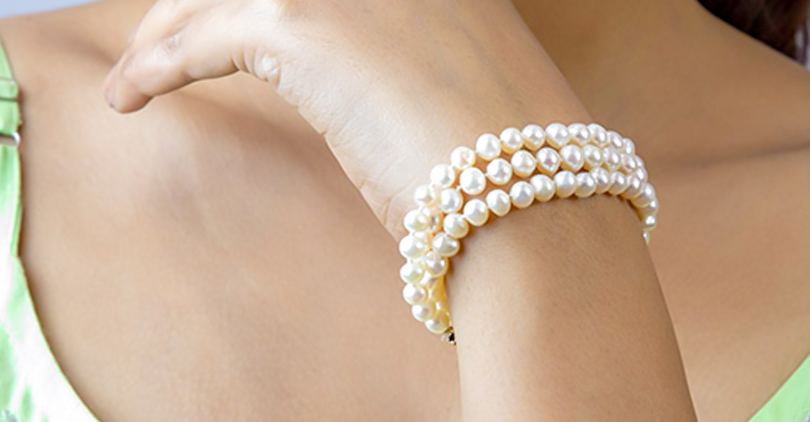
If you're right-handed, for example, you might opt to wear a bracelet on your left wrist so that it doesn't interfere with activities like writing, cooking, or using tools.
Likewise, if you happen to be left-handed, you could feel the constant motion of a bracelet more acutely on your left wrist—so why not move it to your right?
Comfort

When deciding which wrist to wear a bracelet on, comfort is important. If a bracelet is comfortable, you will want to wear it more often. For instance, if it fits well but not too tightly on your non-dominant hand, it won't slide around or bother you during the day's activities.
Bracelets that are lightweight also don't cause irritation or discomfort as readily—perfect for all-day use!
Risk of Damage

If you wear a bracelet on your dominant hand, there's a greater chance of it getting damaged because you use that hand more, and it's more likely to come into contact with things.
But if you put that same delicate or expensive bracelet on your non-dominant hand, it could be protected from scratches, dings, or accidental pulls.
For example, a pearl bracelet can get scratched easily – so wearing it on your less active hand means there's less risk of ruining its lovely shine!
Personal Stories and Experiences
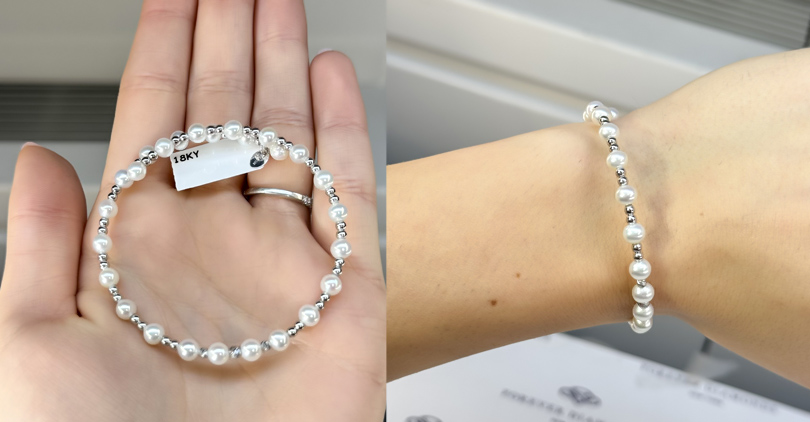
Wearing pearl bracelets can mean a lot to people and hold significance beyond just being beautiful jewelry.
For instance, one woman talked about getting a pearl bracelet from her grandmother on her wedding day, which had been in their family for generations. Whenever she wears it, she says, it feels like connecting to the past and joining a line of women stretching into history.
Another friend mentioned wearing a pearl bracelet every day on her left wrist as a symbol of how far she's come. After surmounting personal difficulties, she received it as a gift. By sporting it there–close both to pulse point and pulse–she means to evoke both strength and perseverance.
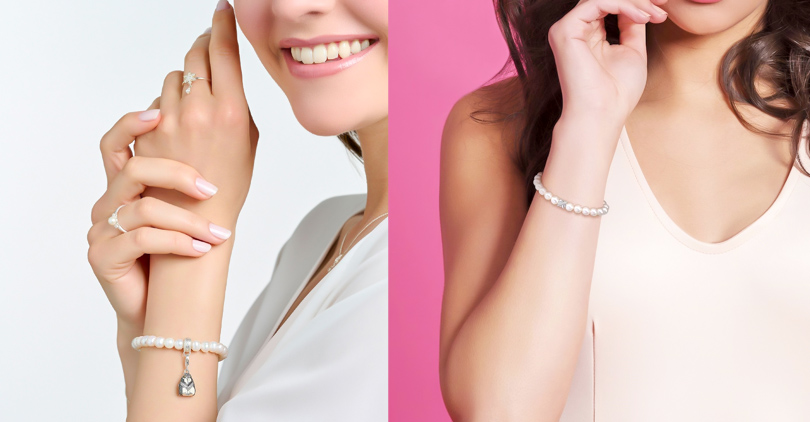
Pearl bracelets are a great option if you want to give someone something special that will stay with them.
One person we know was given a pearl bracelet by her mother when she graduated – it wasn't just a well-done present but showed faith in future success. Whenever she has an important meeting or event coming up, she puts it on and feels like she can tackle anything with her mum behind her.
We'd love to hear from you too: have you ever received or bought yourself a pearl bracelet that means a lot to you? Do you wear it every day, or just for special occasions? Let us know in the comments!
Conclusion
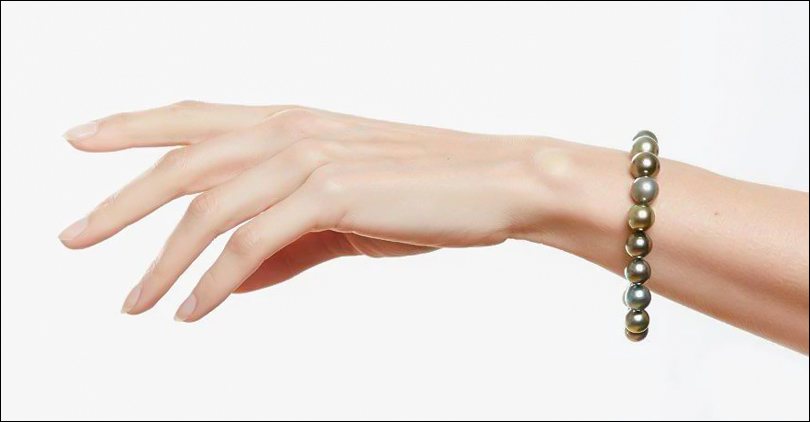
The decision of which hand to wear your pearl bracelet on is not fixed; it can differ according to cultural customs and individual tastes. Pearls have symbolized purity, riches, and rank at different points in history and in different societies.
Ancient or modern, pearls still hold our affection because they are beautiful in a way that doesn't age.
So when you put on a pearl bracelet, pick whichever hand feels best for you: whether that's because it does more (or less) than the other one or just holds sentimental value is up to you.
Above all else, though, enjoy both the style and substance of something so classically elegant!


Leave a Comment